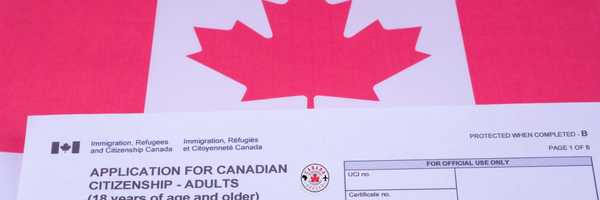How to Immigrate to Canada


Video Transcript:
A lot of people wonder what we do here at Canada Abroad – and it’s actually a great question. If you’ve never looked into immigration before, never researched it, you might not know where to start, or what it is that we can help you with. So today, I, Deanne Acres Lans, am going to explain a little bit about the process, and the different programs available.
To start, I am what’s called a regulated Canadian Immigration Consultant. What that means is that I am actually recognized by the Canadian government and I am authorized to assist people with their applications for immigration to Canada. The first thing that we do is we help people understand if they qualify to go to Canada. So, whether you are looking to visit, study, or immigrate permanently, we can assist you.
Typically, we start off with our free online assessment. We allow people to insert the details that are required to do an assessment of their credentials and their background and then we provide them with free feedback of which program it is they would qualify for. Then from there, if the individual wants more advice or an in-depth consultation, then we can do that with them. We offer a variety of services, we do consultations, free assessments, we can do the full application for you, from start to finish – all application forms, doing any online payments, assisting you with any educational credential assessments or booking a language test, we can do file reviews, we can basically assist you with anything that you need, or any help that you need at any stage in the process.
The other questions that we get, a lot, is “what do I qualify for?” and “how can I move to Canada?”
There are a lot of different options available. There’s what’s called provincial programs, there’s federal programs, there’s temporary residency, there’s permanent residency. The application suitable to you would depend on your background, if you have a job offer, your qualifications, your marital status, do you want to live in a specific province, are you open to any province in Canada – those are the type of things we would look at in the free assessment.
Let’s do a broad overview of the most popular programs that are out there at the moment:
But before we do that, lets clear something up. Express entry is not an immigration program. A lot of people right now are getting confused as to what express entry is. They think that it’s actually the immigration program itself – but in reality, in order to apply to be in the express entry system you actually need to qualify in one of the four existing immigration programs that uses the system.
So, for example, you would first need to qualify as a federal skilled worker, through a program that is actually based on a points system.
To assign points they look at your age, your education, your language level (either English or French), what they call adaptability (that’s if you have family members in Canada, if you worked or studied in Canada before, or if you have a spouse who’s fluent in English or French), and they also look at your years of work experience. The work experience, however, needs to be in what’s called a skilled application. So, they designate this as an occupation that is classified as O, A or B. You would actually need to refer to a certain diagram and figure out if your occupation is on that list. That’s something that we assist you in figuring out – does the work experience you have count as skilled, according to the Canadian government?
Next is the federal skilled trades program: To qualify for this program you would need to either have a job offer from a Canadian employer or a Canadian trades qualification. In other words, even if you have a trades qualification in another country it wouldn’t necessarily make you eligible, you would need to apply to the province in Canada that you want to work or live in, so as to see if you can challenge a test and if your qualifications are recognized there. So, federal skilled trades is another program that we would be able to assist you in seeing if you can meet the qualifications.
The next program is the Canadian experience class. This is for people who have previously lived and worked in Canada on legal status for at least a year. Thus, if you don’t meet that requirement then this program would not be for you.
The last immigration system is what’s called the provincial nominee program. If you have been selected by a specific province, you would be a provincial nominee.
(You could, perhaps, already be working, living or studying in that province and there is a program specific to them to continue to live in in that specific province.)
If you are selected by a Canadian province you need to actually live and work there, as you have been selected by them. In other words, this would not be a federal program.
Now, each of the aforementioned programs possess quite a few different requirements that you would need to meet and each has different documents involved, so we’re actually going to address all of those issues in a separate document, this one is just to give you a basic overview.
Another common question is – a lot of people want to know if they can just go and work in Canada. The first steps to working in Canada is actually to find a job offer from a Canadian employer. And, depending if you are exempt or not, you would need to get what’s called a labor market impact assessment. Essentially what that means is the employer was not able to find a Canadian to do the job and that’s why they are looking outside of Canada to you. The only people who might be exempt from a labor market impact assessment are; certain occupations such as clergy, or if you are being transferred from one branch in a company to another, so the branch in your home country transfers you to the Canadian branch. You would also be exempt and if you are a spouse of someone already working or studying in Canada.
So again, each one if those has its own specifications, which we will address in a separate article. If you want to study in Canada the first requirement is that you need to be accepted into a Canadian educational institution. So, if you haven’t already been accepted you wouldn’t be able to put forward an application for a study permit. You also need to make sure that you can meet all of the financial requirements for your tuition and living expenses for yourself and any accompanying family members. Once again, that’s a program with its own rules and regulations and we are going to address it in a separate article.
Anyone who is looking for assistance in discovering whether they qualify for any of the programs mentioned here or any of the other programs (there are quite a few we haven’t mentioned such as family class, for example) the first step is to complete our free assessment to see if we can assist you with something, and to see if there is something you would qualify for. We are going to put the free assessment in the link below, so you can just click on there and we will get back to you within 24 to 48 hours with your different immigration options. Also, feel free to contact us directly if you have any questions or queries or if you just want to speak to somebody and not get an automated answer.

